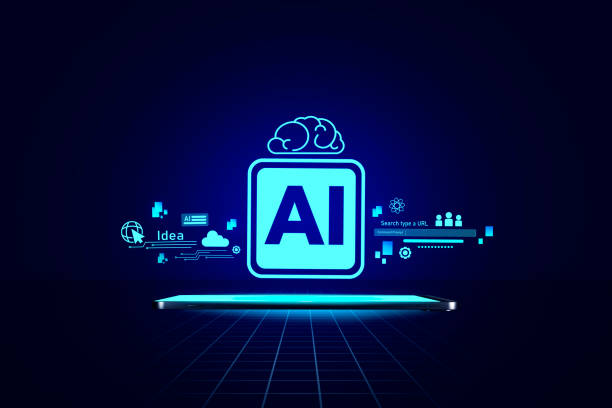What is Artificial Intelligence? Definition, History, and Key Concepts
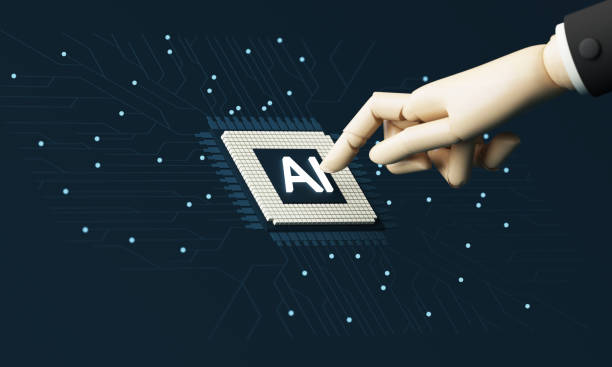
#Artificial_Intelligence (AI) is a branch of computer science that seeks to build machines capable of performing tasks that typically require human intelligence.
These tasks include learning, reasoning, problem-solving, natural language understanding, pattern recognition, machine vision and even creativity.
The history of artificial intelligence dates back to the 1950s, when researchers began to explore the possibility of building intelligent machines.
Key concepts in artificial intelligence include algorithms, neural networks, machine learning, big data, and high processing power.
Artificial intelligence is rapidly advancing and has the potential to transform many industries and aspects of our lives.
In this regard, Artificial Intelligence is divided into two main categories: #Weak_AI (Narrow AI) and Strong Artificial Intelligence (General AI).
Weak AI is designed to perform specific tasks, while Strong AI is capable of understanding, learning, and performing any task that a human is capable of doing.
Weak AI is currently used in many applications, while Strong AI is still in the research and development stage.
To better understand Artificial Intelligence, we need to become familiar with its basic concepts.
One of these concepts is machine learning, which allows machines to learn from data without explicit programming.
Machine learning algorithms analyze data, identify patterns and relationships within them, and use these patterns to make predictions or decisions.
Are you dissatisfied with the low conversion rate of visitors to customers on your online store site?
Solve this problem forever with professional online store design by Rasaweb!
✅ Increase the conversion rate of visitor to customer
✅ Create an excellent user experience and build customer trust
⚡ Get free consultation
Applications of Artificial Intelligence in Everyday Life and Various Industries
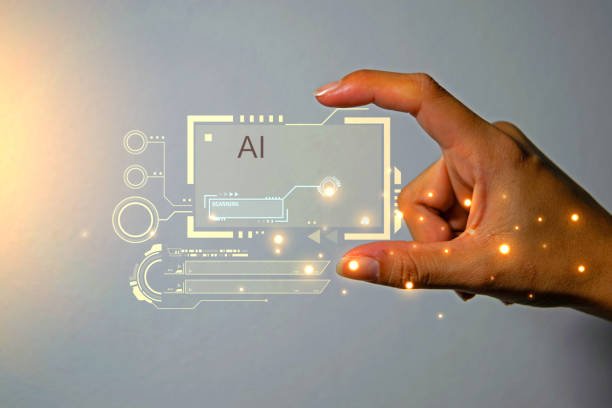
Artificial Intelligence is currently playing a role in many aspects of our daily lives.
These applications include:
- Voice assistants Siri, Alexa, and Google Assistant
- Recommenders on online shopping platforms and movie and music streaming
- Self-driving cars
- Facial recognition in security cameras and smartphones
- Machine translation
In addition, Artificial Intelligence has wide applications in various industries:
- Healthcare Diagnosis of diseases, drug development, and personalized care
- Finance Fraud detection, risk management, and financial advisory services
- Manufacturing Automation of processes, quality control, and prediction of equipment failure
- Education Personalized learning, automated feedback, and creation of educational content
These applications are just examples of the vast potential of Artificial Intelligence, and it is expected that we will see more uses of it in various fields in the future.
Using Artificial Intelligence in everyday life increases efficiency, improves the quality of life, and creates new opportunities.
For example, in the #healthcare industry, Artificial Intelligence can help doctors more accurately diagnose diseases and provide more effective treatments.
In the #finance industry, Artificial Intelligence can help banks and financial institutions identify and prevent fraud.
And in the #manufacturing industry, Artificial Intelligence can help companies improve efficiency and reduce costs.
Machine Learning and its Types: Methods of Training Artificial Intelligence
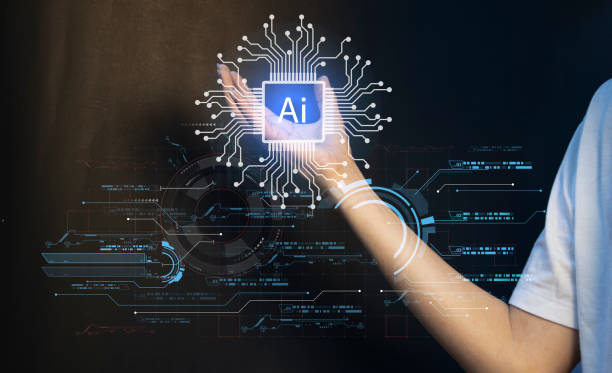
Machine Learning is one of the main sub-branches of Artificial Intelligence that allows machines to learn from data without explicit programming.
In fact, machine learning gives machines the ability to identify patterns and relationships in data by analyzing data and use these patterns to make predictions or decisions.
There are different types of machine learning methods, each of which is suitable for specific applications.
The main types of machine learning are:
- Supervised Learning In this method, the machine is trained using labeled data.
This means that each input data is associated with a specific output.
The goal of supervised learning is to learn a function that can correctly categorize or predict new data. - Unsupervised Learning In this method, the machine is trained using unlabeled data.
The goal of unsupervised learning is to discover hidden patterns and structures in the data.
Clustering and Dimensionality Reduction are among the common techniques in unsupervised learning. - Reinforcement Learning In this method, the machine learns how to optimize a specific goal by interacting with an environment.
The machine performs an action at each stage and adjusts its strategy based on the feedback it receives from the environment (reward or penalty).
Each of these machine learning methods has its own advantages and disadvantages, and the choice of the appropriate method depends on the type of data and the purpose of the application.
| Learning Method | Data Type | Goal | Example |
|---|---|---|---|
| Supervised Learning | Labeled | Prediction or Classification | Spam Detection |
| Unsupervised Learning | Unlabeled | Pattern Discovery | Customer Clustering |
| Reinforcement Learning | Interaction with Environment | Goal Optimization | Computer Games |
Deep Neural Networks: Architecture Inspired by the Human Brain

Deep Neural Networks are a category of machine learning models that are inspired by the structure of the human brain.
These networks are made up of a large number of interconnected layers, each layer consisting of a number of artificial neurons.
Each neuron receives an input, processes it, and produces an output.
The output of each neuron is sent as input to the neurons of the next layer.
Key features of deep neural networks:
- Large number of layers Deep neural networks usually have a large number of layers (more than three layers).
These layers allow the network to learn more complex patterns in the data. - Feature learning Deep neural networks are able to automatically learn important features from data.
These features can be very abstract and complex. - High efficiency Deep neural networks perform very well in many applications, such as image recognition, natural language processing, and machine translation.
Deep neural networks are used in many fields due to their high ability to learn complex patterns.
However, training these networks requires large data and high processing power.
Nevertheless, Artificial Intelligence has made great progress by using these networks.
One of the reasons for the popularity of Artificial Intelligence is this issue.
For example, in image recognition, a deep neural network can recognize different objects by learning patterns in images.
In natural language processing, a deep neural network can understand the meaning of sentences by learning patterns in text.
And in machine translation, a deep neural network can translate a text from one language to another by learning patterns in different languages.
Did you know that a weak company website loses a lot of opportunities every day? Solve this problem forever with professional company website design by Rasaweb!
✅ Create a powerful and reliable image of your brand
✅ Attract new customers and increase sales
⚡ [Get free website design consultation]
Natural Language Processing (NLP): Understanding and Generating Human Language by Machine
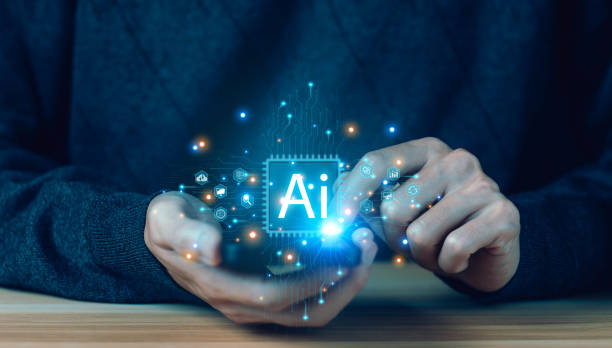
Natural Language Processing is a branch of Artificial Intelligence that enables machines to understand and generate human language.
The goal of Natural Language Processing is to build systems that can interact with humans in natural language, extract information from texts, translate texts, and generate new texts.
Applications of Natural Language Processing:
- Machine Translation Automatic translation of texts from one language to another
- Sentiment Analysis Determining the emotions and attitudes in texts
- Text Summarization Producing short and useful summaries of long texts
- Chatbots Creating conversational systems that can answer users’ questions and help them
- Spam Detection Identifying spam emails and messages
Natural Language Processing uses various techniques such as machine learning, deep neural networks, and linguistic rules.
Recent advances in this field have enabled Natural Language Processing systems to perform more complex tasks.
For example, a Natural Language Processing system can detect the author’s emotions by analyzing the text of a news story.
Or it can extract the key points by summarizing a scientific article.
Or it can answer users’ questions about a product or service using a chatbot.
Natural Language Processing plays an important role in the development of Artificial Intelligence, and it is expected that we will see more applications of it in various fields in the future.
Computer Vision: Seeing and Interpreting Images by Computer
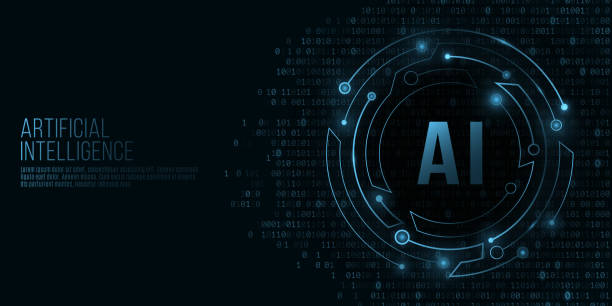
Computer Vision is a branch of Artificial Intelligence that enables computers to see and interpret images.
The goal of Computer Vision is to build systems that can recognize objects, people, and scenes in images, track movements, and extract useful information from images.
Applications of Computer Vision:
- Facial Recognition Identifying people in images and videos
- Self-Driving Cars Detecting obstacles and traffic signs
- Object Detection Identifying different objects in images
- Quality Control Detecting defects in manufactured products
- Medical Imaging Diagnosing diseases and providing more accurate diagnoses
Computer Vision uses various techniques such as machine learning, deep neural networks, and image processing.
Recent advances in this field have enabled Computer Vision systems to perform more complex tasks.
For example, a Computer Vision system can diagnose lung diseases by analyzing radiology images.
Or it can identify suspicious people by analyzing images from security cameras.
Or it can detect obstacles and traffic signs using cameras installed on a self-driving car.
Computer Vision plays an important role in the development of Artificial Intelligence, and it is expected that we will see more applications of it in various fields in the future.
However, Artificial Intelligence is not completely dependent on Computer Vision and can use other methods as well.
Challenges and Limitations of Artificial Intelligence

Despite significant advances in the field of Artificial Intelligence, there are still challenges and limitations that need to be addressed.
These challenges include:
- Need for Big Data Many Artificial Intelligence algorithms require large data for training.
Collecting and processing this data can be challenging and costly. - Interpretability It is difficult to understand how some Artificial Intelligence models, such as deep neural networks, work.
This can reduce trust in these models. - Bias If the training data is biased, Artificial Intelligence models may also become biased.
This can lead to discrimination and inequality. - Security Artificial Intelligence systems may be vulnerable to cyberattacks.
These attacks can disrupt system performance or steal information. - Ethical Issues The use of Artificial Intelligence can raise various ethical issues, such as privacy, accountability, and employment.
Addressing these challenges and limitations requires the joint efforts of researchers, policymakers, and society.
| Challenge | Description | Solution |
|---|---|---|
| Need for Big Data | Algorithms need a lot of data for training. | Using artificial data, transfer learning |
| Interpretability | It is difficult to understand how models work. | Developing interpretability methods, using simpler models |
| Bias | Training data may be biased. | Data cleaning, using bias removal techniques |
The Future of Artificial Intelligence: Opportunities and Threats
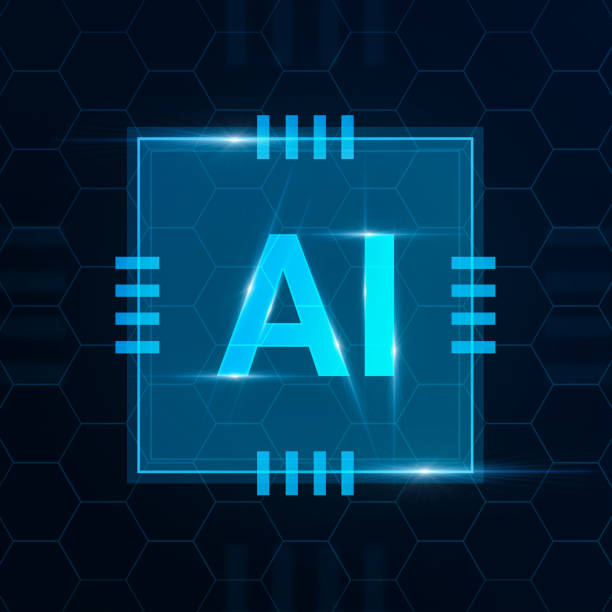
The future of Artificial Intelligence is full of opportunities and threats.
On the one hand, Artificial Intelligence has the potential to improve human lives in various fields.
On the other hand, Artificial Intelligence can lead to job losses, increased inequality, and security risks.
Opportunities of Artificial Intelligence:
- Improved Productivity Artificial Intelligence can increase productivity in various industries by automating tasks.
- Creating New Opportunities Artificial Intelligence can create new opportunities for entrepreneurship and innovation.
- Solving Complex Problems Artificial Intelligence can help solve complex problems such as climate change, intractable diseases, and poverty.
- Improving Quality of Life Artificial Intelligence can improve the quality of life by providing better services in the areas of health, education, and transportation.
Threats of Artificial Intelligence:
- Job Losses Artificial Intelligence can lead to job losses by automating tasks.
- Increased Inequality If the benefits of Artificial Intelligence are distributed unequally, it can lead to increased inequality.
- Security Risks Artificial Intelligence can be used for malicious purposes, such as cyberattacks and automated weapons.
- Ethical Issues The use of Artificial Intelligence can raise various ethical issues, such as privacy, accountability, and discrimination.
To benefit from the opportunities of Artificial Intelligence and reduce its threats, we must adopt a responsible and comprehensive approach.
This approach should include developing the skills needed for the Artificial Intelligence era, enacting appropriate laws and regulations, and promoting the ethical use of Artificial Intelligence.
You don’t have a company website yet and you are missing out on online opportunities? With professional company website design by Rasaweb,
✅ Double the credibility of your business
✅ Attract new customers
⚡ Free consultation for your company website!
Ethics in Artificial Intelligence: Importance and Challenges
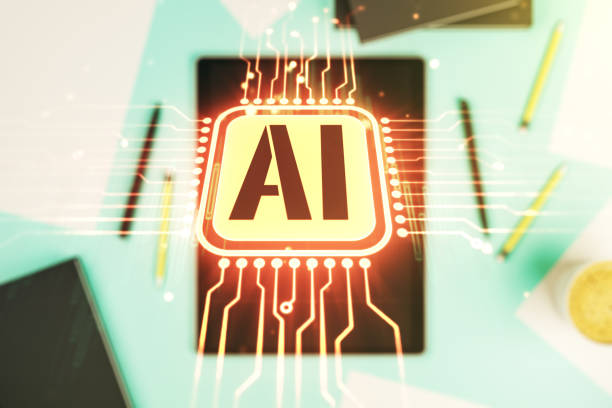
With the ever-increasing applications of Artificial Intelligence, ethical issues related to it are also becoming more important.
Artificial Intelligence can have a profound impact on human lives, and decisions made by Artificial Intelligence systems can have significant consequences.
Therefore, it is essential to consider ethical principles in the design, development, and use of Artificial Intelligence.
The most important ethical issues in Artificial Intelligence:
- Privacy Artificial Intelligence systems often need to collect and process personal data.
This can lead to violations of people’s privacy. - Accountability If an Artificial Intelligence system makes a mistake, who is responsible? The developer, the user, or the Artificial Intelligence system itself?
- Discrimination If the training data is biased, Artificial Intelligence systems may also become biased and lead to discrimination.
- Transparency It is difficult to understand how some Artificial Intelligence models work.
This can reduce trust in these models. - Security Artificial Intelligence systems may be vulnerable to cyberattacks.
These attacks can disrupt system performance or steal information.
To solve these ethical issues, we must create a comprehensive ethical framework for Artificial Intelligence.
This framework should include ethical principles, laws and regulations, and oversight mechanisms.
For example, in the area of privacy, strict rules should be established for the collection and processing of personal data by Artificial Intelligence systems.
In the area of accountability, mechanisms should be created to determine responsibility in the event of an error by Artificial Intelligence systems.
And in the area of discrimination, unbiased training data should be used, and the performance of Artificial Intelligence systems should be regularly reviewed.
Adhering to ethical principles in Artificial Intelligence is essential to ensure that this technology is used for the benefit of all humans.
Artificial Intelligence should be used as a tool to improve human lives and solve global problems.
How to Learn Artificial Intelligence? Learning Resources and Paths
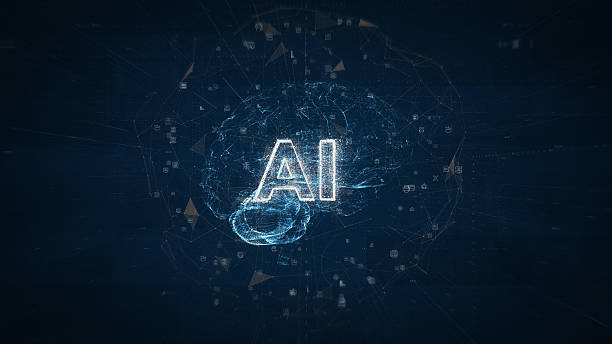
If you are interested in learning Artificial Intelligence, there are various learning resources and paths that you can use.
Choosing the right learning path depends on your previous knowledge level, interests, and goals.
Artificial Intelligence Learning Resources:
- Online Courses Online educational platforms such as Coursera, Udemy, and Edx offer a variety of courses in the field of Artificial Intelligence.
- Books There are many books on Artificial Intelligence that you can use to learn basic and advanced concepts.
- Scientific Articles Scientific articles published in reputable conferences and journals present the latest achievements in Artificial Intelligence.
- Practical Projects Doing practical projects is the best way to learn Artificial Intelligence.
You can train Artificial Intelligence models and evaluate their performance using existing data. - Online Forums and Groups Joining online Artificial Intelligence forums and groups allows you to connect with other enthusiasts in this field and learn from their experiences.
Artificial Intelligence Learning Paths:
- Academic Learning Path If you are interested in research and development in the field of Artificial Intelligence, you can study at the postgraduate level (Master’s and Ph.D.) in fields related to Artificial Intelligence.
- Self-Taught Learning Path If you are interested in learning Artificial Intelligence in a self-taught way, you can use online courses, books, and practical projects.
- Professional Learning Path If you are interested in working in the Artificial Intelligence industry, you can participate in professional training courses and acquire the skills needed to work in this industry.
Learning Artificial Intelligence requires effort and perseverance, but by choosing the right learning path and using reliable resources, you can succeed in this field.
FAQ
| Question | Answer |
|---|---|
| 1. What is Artificial Intelligence (AI)? | It is a branch of computer science that aims to create machines capable of mimicking human intelligence and performing tasks that require human thinking, such as learning, problem-solving, and decision-making. |
| 2. What are the main types of Artificial Intelligence? | They can be classified into weak AI (Narrow AI) that focuses on a specific task, general AI (General AI) that possesses comprehensive human capabilities, and super AI (Super AI) that surpasses human intelligence. |
| 3. Mention some common Artificial Intelligence applications in our daily lives. | They include voice assistants (such as Siri and Alexa), recommendation systems (such as Netflix and Amazon), self-driving cars, facial recognition systems, and spam filters. |
| 4. What is the difference between Artificial Intelligence and Machine Learning? | Artificial Intelligence is the broader concept of creating intelligent machines, while Machine Learning is a subset of Artificial Intelligence that focuses on enabling systems to learn from data without explicit programming. |
| 5. What is Deep Learning? | It is a subset of machine learning that uses multi-layered artificial neural networks (deep neural networks) to process data and discover complex patterns, and it is used in image and speech recognition. |
| 6. What are the most prominent benefits of Artificial Intelligence? | Improving efficiency and productivity, automating repetitive tasks, making better decisions based on big data analysis, and developing solutions to complex problems in fields such as medicine and science. |
| 7. What are the main challenges facing the development and deployment of Artificial Intelligence? | They include the need for vast amounts of high-quality data, privacy and security issues, bias in data and algorithms, and high development and maintenance costs. |
| 8. Does Artificial Intelligence raise ethical or social concerns? | Yes, it raises concerns related to privacy, algorithmic bias, job loss due to automation, and responsibility for errors made by intelligent systems, and the need for a regulatory framework. |
| 9. How can Artificial Intelligence affect the future of the labor market? | It can lead to the automation of some routine jobs, but it will also create new jobs that require advanced skills in developing, operating, and maintaining Artificial Intelligence systems. |
| 10. What are some modern or promising technologies in the field of Artificial Intelligence? | They include advanced Natural Language Processing (NLP) (such as large language models like ChatGPT), computer vision, robotics, and Generative AI. |
And other services of Rasa Web Advertising Agency in the field of advertising
Smart Marketing Automation: Revolutionize your website visits by using real data.
Smart UI/UX: A fast and efficient solution to attract customers by focusing on attractive user interface design.
Smart Digital Branding: An exclusive service to grow customer acquisition based on the use of real data.
Smart Conversion Rate Optimization: An exclusive service to grow customer acquisition based on precise audience targeting.
Smart Website Development: An exclusive service for growing online growth based on precise audience targeting.
And more than hundreds of other services in the field of internet advertising, advertising consulting and organizational solutions
Internet Advertising | Advertising Strategy | Advertorial Report
Resources
What is analytical artificial intelligence?
,What is augmented analysis with artificial intelligence?
,Artificial intelligence in other production and marketing
,What is artificial intelligence (AI)?
? Transform your business in the digital world with Rasa Web Afrin! From professional WordPress website design to powerful SEO and social media management, we are with you to shine at the top.
📍 Tehran, Mirdamad Street, next to the Central Bank, Kazeroon Jonoubi Alley, Ramin Alley No. 6
“`



